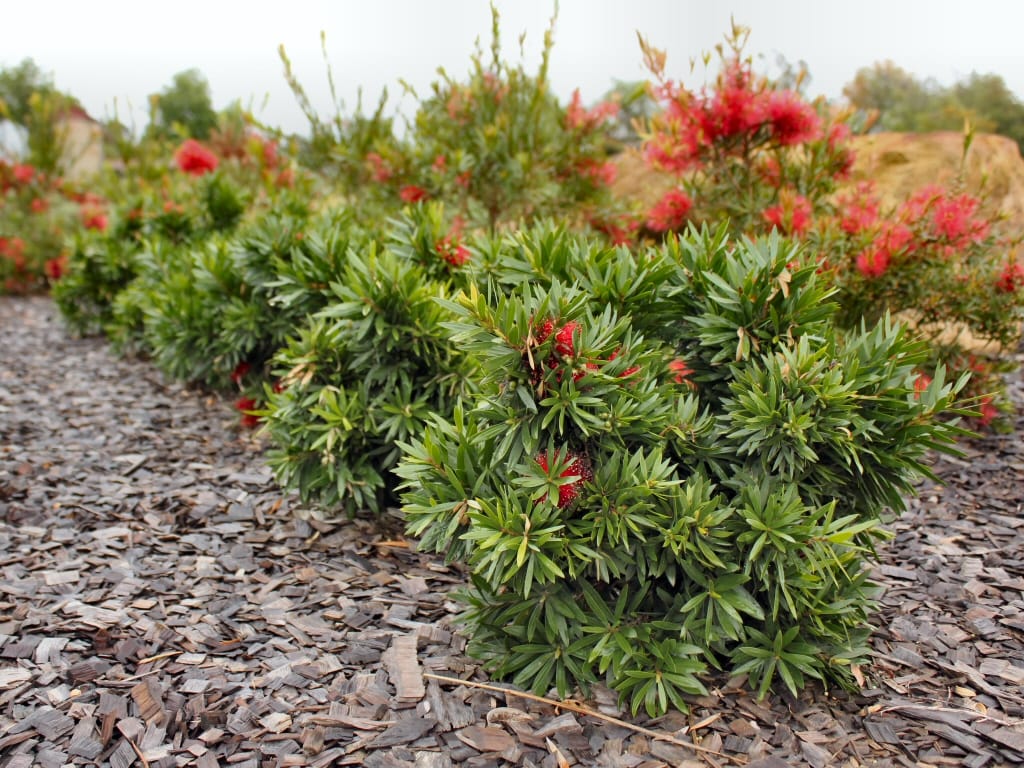Callistemon viminalis, the weeping bottlebrush, captivates with cascading branches of vibrant red blooms, adding a touch of Australian elegance to any landscape. Fast-growing and adaptable, it thrives in various conditions, making it a rewarding choice for both novice and experienced gardeners. This comprehensive guide will equip you with everything you need to cultivate and cherish this remarkable plant. Explore the world’s most fragrant flowers with the champaca tree and dive into the captivating abyss to find out everything about choriaster granulatus, the sand star.
Unveiling the Weeping Bottlebrush: A Botanical Portrait
The Weeping Bottlebrush, scientifically known as Melaleuca viminalis (formerly Callistemon viminalis), is a fast-growing evergreen shrub or small tree. In ideal conditions, it can reach heights of up to 8 meters (26 feet), with some specimens reaching a remarkable 18 meters (59 feet). Its most distinctive feature is its pendulous, or “weeping,” branches, which give the plant its common name. These branches are adorned with narrow, light green, linear to lanceolate leaves, reaching up to 7cm in length. Young leaves often display a beautiful pinkish-purple hue, adding to the plant’s visual appeal. Crushing the leaves releases a refreshing, lemony aroma.
The true spectacle, however, lies in the flowers. Dense spikes of vibrant, blood-red (scarlet-vermilion) blossoms, resembling bottlebrushes, emerge primarily in late spring and early summer, although sporadic flowering can occur throughout the year. These striking flower spikes can grow up to 15cm (6 inches) long, creating a dramatic display of color that attracts hummingbirds and butterflies. Native to eastern Australia (New South Wales, Queensland, and Western Australia), the Weeping Bottlebrush is often found thriving along watercourses and coastal plains.
Cultivating the Weeping Bottlebrush: A Gardener’s Guide
One of the Weeping Bottlebrush’s greatest assets is its adaptability. It thrives in a variety of conditions, making it a surprisingly low-maintenance choice for gardeners of all skill levels.
Sunlight and Soil
- Sunlight: For optimal blooming, the Weeping Bottlebrush prefers a location with at least six to eight hours of direct sunlight per day. While it can tolerate some shade, particularly in hotter climates, full sun exposure will generally result in more prolific flowering.
- Soil: While adaptable to a range of soil types, well-drained soil is essential for healthy growth. Heavy clay soils should be amended with compost or other organic matter to improve drainage and prevent waterlogging. A slightly acidic soil pH (between 5.5 and 6.5) is ideal but not strictly necessary. Many garden centers offer soil testing kits, making it easy to assess and adjust your soil’s pH if needed.
Watering and Pruning
- Watering: Once established, the Weeping Bottlebrush exhibits moderate drought tolerance, a testament to its Australian origins. However, regular watering, especially during extended dry periods, is crucial for vigorous growth and abundant blooms. Water deeply but infrequently, allowing the soil to dry out somewhat between waterings.
- Pruning: While not essential for survival, pruning can enhance the Weeping Bottlebrush’s shape and promote bushier growth. Light pruning after flowering removes spent blooms and any dead or damaged branches. More extensive pruning to control size and shape can be undertaken in late winter or early spring.
Propagation
Expanding your collection of Weeping Bottlebrushes is straightforward. They can be readily propagated from either seeds or cuttings. Seeds can be sown in spring, while cuttings, taken from new growth, are best rooted in spring or summer.
Beyond Beauty: Uses and Benefits
The Weeping Bottlebrush’s value extends beyond its ornamental appeal. Traditional uses suggest it possesses antibacterial and antifungal properties. Although scientific research is ongoing to fully understand these potential benefits, early findings are promising. Some studies also indicate that the nectar from the flowers may have medicinal properties.
From Callistemon to Melaleuca: A Taxonomic Tale
The Weeping Bottlebrush has undergone a recent name change in the botanical world. It has been reclassified from Callistemon viminalis to Melaleuca viminalis, reflecting ongoing research and advancements in plant taxonomy. Don’t be surprised to encounter both names; the transition in labeling can take time. The species name “viminalis,” derived from Latin, means “having long, flexible shoots like a willow,” a fitting description of its gracefully drooping branches.
Potential Drawbacks: Considering the Challenges
While generally low-maintenance, the Weeping Bottlebrush, like any plant, has potential drawbacks:
- Invasive Potential: In some regions, it can spread rapidly, potentially outcompeting native vegetation. Research local regulations and consider its growth habit before planting.
- Messiness: Fallen flowers, bristles, bark, and leaves can create litter. Regular cleanup may be necessary, particularly around patios or pools.
- Seed Production: Prolific seed production can lead to numerous seedlings. Removing spent flower spikes can help minimize unwanted spread.
- Allergies: Some individuals may experience allergic reactions to pollen or other plant parts.
- Root System: While not typically considered highly invasive, the roots can be vigorous. Plant with caution near structures or underground utilities.
The Weeping Bottlebrush: A Rewarding Addition
The Weeping Bottlebrush, whether you call it Callistemon or Melaleuca, is a versatile and rewarding plant for any garden or landscape. Its vibrant flowers, graceful form, adaptability, and relative ease of care make it a truly remarkable choice. By understanding its needs and potential challenges, you can ensure its success and enjoy its beauty for years to come.
- Discover Long Black Pepper: Flavor & Health Benefits - April 25, 2025
- Shocking Twists: The Grownup Review: Unreliable Narration - April 25, 2025
- A Quiet Place Book vs Movie: A Deep Dive - April 25, 2025
















